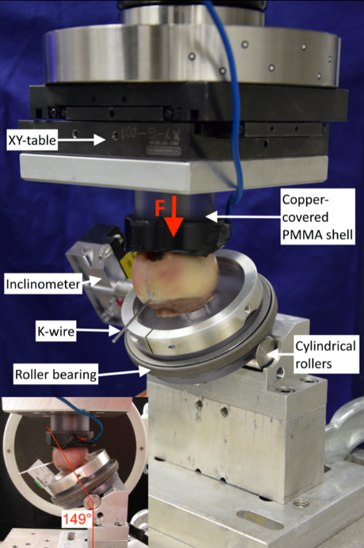Biomechanical comparison of two implant head elements for screw-blade anchorage in the femoral head
Background
Proximal femoral fractures are the most common fractures in patients older than 65 years, being accompanied by high complication rates ranging up to 35% for femoral neck fractures and up to 15% for trochanteric ones. Despite the variety of existing implant systems, their treatment is still challenging. The screw-blade implant systems, being a combination of a lag screw and a blade adding rotation stability to the femoral head, offer a new approach for improvement of the osseous purchase, especially in osteoporotic bone.
Goal
To compare biomechanically the head element (HE) anchorage of 2 screw-blade implant systems in the femoral head.
Results
Twenty paired human cadaveric femoral heads were assigned to 4 groups (n=10), implanted with either Rotationally Stable Screw-Anchor (RoSA) HE or Gamma3 Rotation Control Lag Screw (U-Blade) in center or off-center position, and biomechanically tested under progressively increasing cyclic axial loading at 2 Hz. U-Blade revealed better femoral head anchorage in center position compared to RoSA HE. On the other hand, RoSA HE seems to react less sensitive to suboptimal screw insertion in off-center position than U-Blade.
-
Partner
Knobe M (Prof), Cantonal Hospital Lucerne, Switzerland


